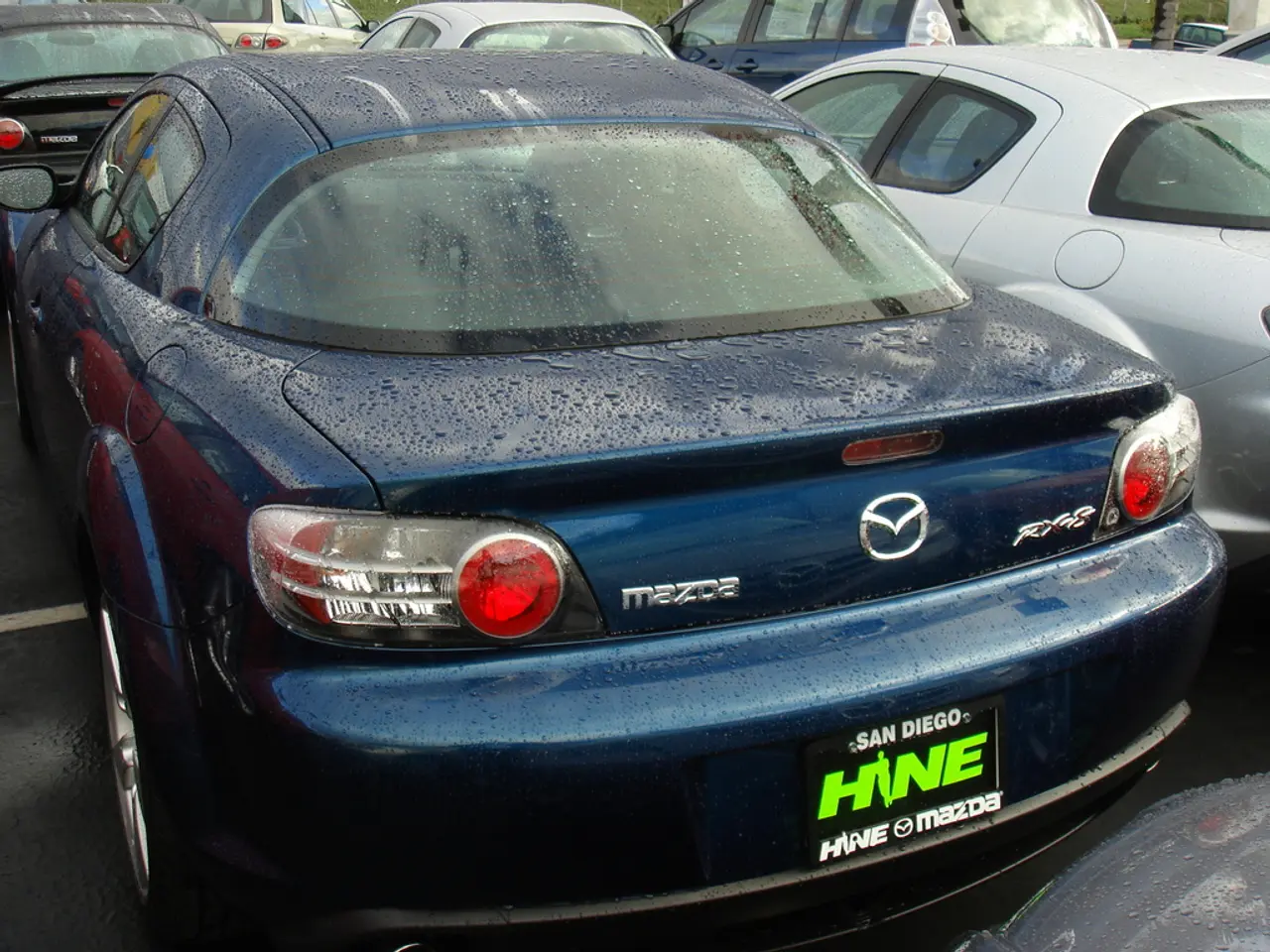Functioning of the California Air Resources Board (CARB)
California, known for its persistent smog and air pollution problems, has been at the forefront of enforcing some of the strictest air quality and vehicle emissions regulations in the United States. These regulations are aimed at reducing pollution and advancing zero-emission vehicles (ZEVs) [1][2][3].
The California Air Resources Board (CARB) oversees these efforts with the goal of reducing air pollutants while balancing economic effects [3]. The state’s regulations have already led to about one in four new cars sold being zero-emission vehicles, with a strong ecosystem of ZEV manufacturers and a robust charging infrastructure [3].
California's unique authority to set these tougher rules is granted by EPA waivers. The state’s regulations have been influential, with 16 other states either adopting or in the process of adopting California's strict emissions standards [1]. By 2010, one-third of all cars in the United States were estimated to meet California's emission standards [1].
The state's commitment to phasing out gas and diesel vehicles is evident in its plans to ban the sale of new gasoline-powered cars by 2035, transitioning to electric vehicles (EVs) and other ZEVs [1][2][3]. California was the first state to start regulating vehicle emissions back in the 1960s [1].
The federal EPA under the Trump administration has proposed to roll back the 2009 finding that greenhouse gas emissions endanger public health, which underpins these vehicle emission regulations. This federal move threatens to revoke California’s waiver and undercut its clean car standards [1][2][4]. In response, California’s governor has signed executive orders to reinforce the state's commitment to phasing out gas and diesel vehicles and directed CARB to develop new or strengthened mandates in case federal protections are lost [1][2][4].
The conflict affects emissions control and vehicle manufacturers, since revoking California's authority would lower future obligations for measuring, controlling, and reporting vehicle greenhouse gas emissions nationwide. California argues that weakening these rules would lead to more gasoline-powered cars, higher gas demand, and increased pollution—jeopardizing health improvements that have saved billions in healthcare costs so far [1][2][3].
The California Air Resources Board has nine main divisions: Administrative Services, Enforcement, Mobile Source Control, Mobile Source Operations, Monitoring and Laboratory, Office of Information Services, Planning and Technical Support, Research, and Stationary Source [1]. The board members of the California Air Resources Board are appointed by the state's governor and serve as long as he or she wants them to [1].
In the 1980s, the California Air Resources Board tightened nitrogen oxide emissions, effectively causing the demise of the carburetor in favor of fuel injection [1]. California has historically had some of the worst air quality in the United States, but its efforts to regulate emissions have made significant strides in improving air quality [1].
References:
[1] American Lung Association. (n.d.). State of the Air 2021. Retrieved from https://www.lung.org/our-initiatives/healthy-air/sota/
[2] California Air Resources Board. (n.d.). About CARB. Retrieved from https://www.arb.ca.gov/about/about.htm
[3] California Air Resources Board. (2021). Zero-Emission Vehicles. Retrieved from https://www.arb.ca.gov/msprog/zev/
[4] California Governor's Office. (2019). Executive Order N-20-07. Retrieved from https://www.gov.ca.gov/wp-content/uploads/2019/09/EO-N-20-07.pdf
- California's unique authority in enforcing strict emissions regulations stems from EPA waivers, influencing 16 other states to adopt similar standards.
- The California Air Resources Board (CARB) continues to oversee efforts aimed at reducing air pollutants and recently announced plans to phase out gasoline-powered cars by 2035.
- The transition to electric vehicles (EVs) and other zero-emission vehicles (ZEVs) in California has led to a strong ZEV manufacturing ecosystem and a robust charging infrastructure.
- California’s regulations have already resulted in about one in four new cars sold being ZEVs, with the state estimated to have one-third of all cars in the United States meeting its emission standards by 2010.
- The state’s history of regulating vehicle emissions dates back to the 1960s, and its efforts to improve air quality have made significant strides despite persistent smog and air pollution problems.
- The California Air Resources Board's (CARB) commitments extend to health and wellness, as reducing air pollutants saves billions in healthcare costs by improving public health.
- In the realm of science, environmental-science, automotive technology, and health-and-wellness, California has demonstrated a strong commitment to engineering solutions for medical-conditions related to pollution and promoting computer-driven advancements to combat these issues.




